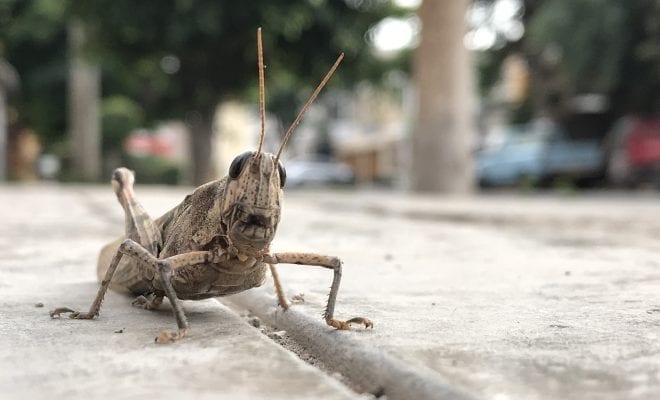
Lifestyle
Is The Future of Food…Bugs?
The world population is expected to swell to 9 billion by 2050, and we are faced with the pressing issue of keeping up with the global demand for food. 9 billion mouths to feed is quite the order to fulfill, and if we were to keep up with this staggering demand, we would have to produce nearly twice as much food as we do now.
This achievement won’t be so easy though. We already use more than 70% of the world’s agricultural land, and with climate change and pollution, our oceans and crop production are reaching critical stages for being able to support the global food supply. Knowing this, the UN Food and Agriculture Organization is turning to alternative forms of food for the future.
Entomophagy is the practice of consuming insects for food, and has been utilized for thousands of years. Bugs are already consumed as part of a regular diet for billions of people around the world, and over 1,900 species are known to be edible. Some of which commonly include a variety of wasps, ants, caterpillars, bees, and beetles.
If that sounds gross, we’re right there with you, but there are some important aspects to consider. Insects are actually a fairly healthy food source, containing high levels of fat, protein, vitamins, fibers, and mineral content. Some insects are also rich in omega-3s and essential amino acids, both of which are important macronutrients found in fish and meat.
They aren’t that bad when it comes to taste either. Crickets are often reported to taste like nutty chicken and, when prepared crispy, provide a satisfying crunch similar to popcorn. Some say giant grubs can resemble bacon when cooked properly.
Most importantly, bugs are much more environmentally friendly to cultivate and consume when compared to traditional livestock and fish. Crickets require very little to feed, and are 80% edible when compared to cattle, which are only 40%. Insects also require much less water to reproduce, and due to their shorter life spans, they can be quickly farmed in larger quantities in smaller areas. With lower land, food, and water requirements, insects can have a massive impact on the global population without digging too deep into our natural resources.
An insect-rich diet may already be a normal way of life in Eastern countries, but it has been slow to make its way to the West. Research has shown that consumers in Western markets are hesitant to try bugs as a food source due to the common perception of it being, well, gross.
While most extreme reactions towards bugs are when consumers see the visual of an entire bug being prepared as a meal, the more people are open to the idea of consuming products containing insects. This includes products like flour and protein bars made from crickets, though they are still mainly used in an artisanal capacity.
Though not yet a common part of our diets, insects may have their time in the West in the near future. If the idea of eating bugs is just too gross for you, I leave you with this: Current U.S. FDA guidelines allow certain amounts of insects and insect fragments for food products. To put it lightly, you’re likely already consuming one to two pounds of creepy crawly insects each year without knowing it. Cheers!



0 comments